Deep Space Exploration Society
Perseid Meteor Shower Expedition 2016
DSES conducted its first open house on Friday, August 12, in conjunction with the Perseid Meteor Shower. We had 11 DSES members and over 20 guests spend the evening looking at Saturn, Jupiter, Mars and the Moon through telescopes while watching for meteors at the Plishner Radio Astronomy and Space Science Center in Haswell, CO.
We had five optical telescopes on site for viewing of the skies as well as lectures from 2 Pikes Peak Community College astronomy instructors who provided instruction on the use of the various telescopes present.
We had a few glitches such as the mice eating the wiring in the generator controller which shut down the main source of power for the site. However, thanks to some quick calls, Dave and Bill were able to get a generator shipped down to the site. This generator powered the site for the next two days while Ed worked out how to fix the primary generator regulator.
Special recognition for Don and Adam who traveled 4 hours to attend the event. They also spent many hours clearing the bunker ramp of tumbleweeds.
We had four or five optical telescopes set up for everyone’s viewing pleasure and some of the local community came out for an impromptu start party. Everyone had an educational and great social time together.
Kevin Ahrens and several other photographers came down and shot some amazing photos and time-laps videos of the storms rolling in.

Gary Agranat organized and manned a special events Ham station and collected 86 contacts on several different bands during the event. This was the first major use of the DSES new Club Station call sign, k0prt (prt stands for Plishner Radio Telescope). New QSL card were made by Kammie Russel, the daughter of a DSES member.
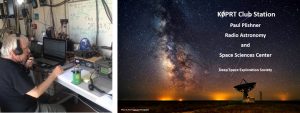
Much progress was made in outfitting the dish and getting control set up.

Many members stayed overnight at Diane’s Park which is under the 60 foot dish.
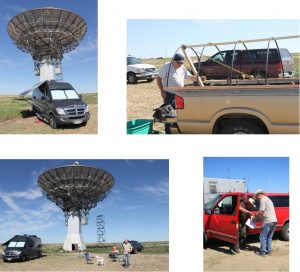
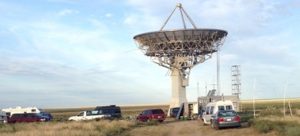
Ray and Floyd prepared a 6 meter antenna for the meteor detection radio telescope. The communications van was outfitted with extra antennas for 6 meter ham radio plus UHF and VHF amateur satellite communications. The van also has a 6 meter to 180 meter dipole for HF communications.

Bob counted sunspots and solar prominences using the solar telescope lent to DSES for this event by Pikes Peak Community College. A star party with multiple optical telescopes was a big hit while watching for meteors.

Myron set up an AMSAT communications system in the communications van.
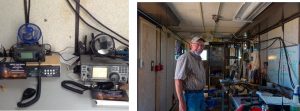
The neutral hydrogen experiment was installed using the SpectraCyber system. The dish was moved to accommodate the new advanced feed built by Ray. The feed will be permanently mounted on the dish in the next couple of week. This will allow for UHF, VHF, 1296 MHz Earth-Moon-Earth (moon-bounce) and 1420 MHz neutral Hydrogen radio astronomy.
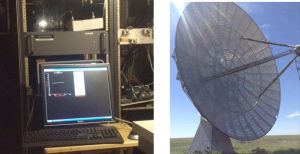
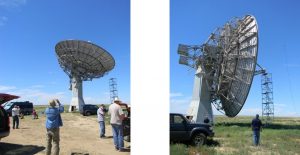

The next expedition will involve using the new antenna feed system for the ARRL Moon Bounce contest in the October time frame as well as the first use of the primary dish for the neutral hydrogen radio astronomy experiments.